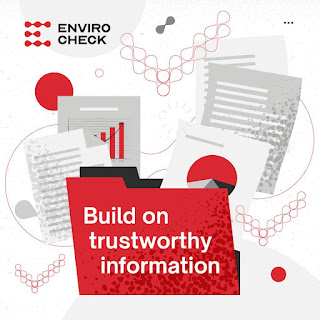Environmental Testing Labs - Informing About Our Surroundings
In an era where environmental awareness is crucial, understanding what’s happening in our surroundings is the first step toward creating a healthier and more sustainable future. Environmental testing labs (ETLs) play an indispensable role in identifying issues in air, water, soil, and other natural resources. These facilities provide critical data, enabling individuals, businesses, and governments to take informed action to protect both human health and the environment.
What
Are Environmental Testing Labs?
ETLs
specialize in analyzing samples from various environmental elements to detect
contaminants, pollutants, or other harmful substances. Their expertise spans
air quality testing, water contamination analysis, soil sampling, and even
waste management assessments. These labs employ cutting-edge technology and
scientific methods to provide precise data on environmental health. From
detecting heavy metals in soil to measuring the concentration of harmful gases
in the atmosphere, their findings are instrumental in diagnosing and addressing
environmental challenges.
Understanding
What’s Wrong
The
key function of ETLs is identifying the "invisible" problems that can
have profound impacts on ecosystems and human well-being. For instance:
·
Water Quality
Issues: Labs test for bacteria, chemicals, and toxins in
water sources, helping communities ensure access to clean drinking water and
supporting industries in adhering to regulations.
·
Air Pollution: By analyzing air samples for particulate matter, carbon monoxide, and
volatile organic compounds (VOCs), labs help pinpoint sources of pollution and
recommend solutions to improve air quality.
·
Soil Contamination: Testing soil for pesticides, heavy metals, and nutrients informs
agricultural practices, ensures food safety, and supports land restoration
efforts.
·
Industrial and
Hazardous Waste: Labs also assess waste materials for compliance
with environmental regulations, aiding in the proper disposal of harmful
substances.
How
Labs Help Fix the Problems
Once
the issues are identified, environmental
testing labs provide actionable recommendations to mitigate
and solve these challenges. Their reports guide decision-makers in crafting
targeted strategies, such as:
- Implementing waste treatment systems to reduce
pollutants in water.
- Adopting clean energy and emission control
measures to curb air pollution.
- Employing bioremediation techniques to restore
contaminated soil.
- Supporting industries in meeting compliance
standards to reduce their environmental footprint.
Moreover,
the data from these labs is vital for shaping policies, enforcing regulations,
and driving environmental innovation.
A
Healthier Future Through Informed Actions




Comments
Post a Comment